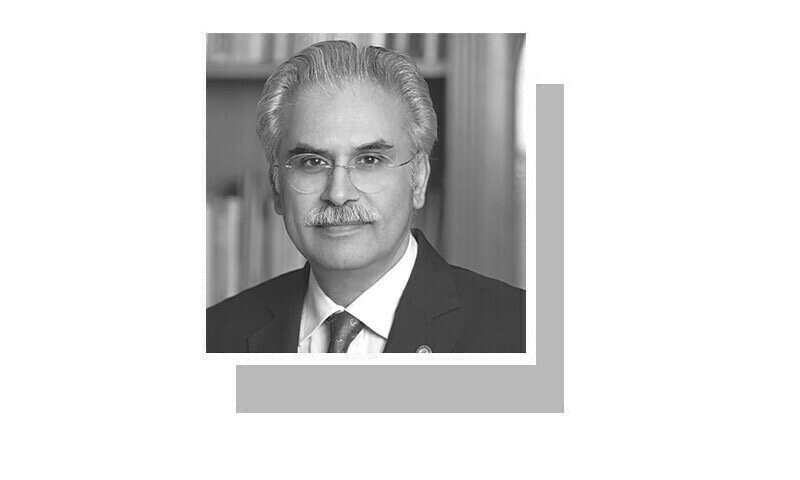On July 6, 2020, at the height of the Kovide 19 pandemic diseases, the Trump administration sent a letter to the UN Secretary -General, discussing the United States’ intentions to withdraw from the World Health Organization (WHO). It takes a year for a member state to withdraw from a UN organization. So, it was a wrong calculation. On January 20, 2021, Donald Trump’s term expired and the return process could not be completed. In the same month, in his first acting as president, Biden withdrew the letter. Now Trump has once again pulled a plug. This time, he has four years ahead of him.
This is like ending an old marriage. The United States was one of the 61 founding members of the WHO. A conference was held in New York in June 1946 to establish an international health organization. On April 7, 1948, who was enforced. This day is celebrated as World Health Day. The United States became a member of the WHO through the US Congress Act.
Trump’s Executive Order offers three reasons for exiting: “The misunderstanding of the organization’s Covid 19 pandemic diseases that was born of Wuhan, China and other global health, its failure to immediately adopt the necessary reforms, And the failure to show freedom from it, the inappropriate political influence of WHO member states.
In addition, the WHO continues to demand unfair payments from the United States, off the proportion of assessed payments from other countries. It has named China as an example of the last point, saying that its population is 1.4 billion, 300 % of its population, yet the WHO has about 90 90pc less. “
Global health is a severe blow to the United States.
Regarding the first point about the misconception of pandemic disease, global pandemic diseases have never been answered in public health history, as was the Covade 19. Who was the central agency to connect global reaction? On the second point, the WHO has never made much reforms in its works than the two terms of the current Director General, Dr. Tedros Adhanom Gabris. Are these enough? No. Further reforms are needed and it depends on the member states to create improvement. In this regard, the United States is the most responsible responsibility as the most influential member of its financial contribution. The third point is about incompetence, the WHO member states being disqualified from inappropriate political influence. People who have participated in the World Health Assemblies (I have participated in 11 different abilities, including the minister) who has the political influence on these forums.
Finally, on the issue of payments, the United States is really the largest donor. The WHO is alive in the partnership of its members. These include: Partnership and volunteer contributions were evaluated. According to a unanimous formula, which is the country’s wealth and population factors. According to this formula, the US contribution is the highest, though the diagnosed partnerships are less than 20pC in the WHO’s total budget. The remaining 80pc comes through a voluntary partnership of the member states. Even on this count, the United States has been the largest partner. Once again, it is up to the members to agree on how they want financing the organization.
The WHO 2024-2025 Benium budget is $ 6.83bn. In its basic budget, the US partnership is about 22PC (about 4 134.58 million for the financial year 2025), and has provided an average of $ 237 million in annual voluntary financing from FY 2012 since fiscal year 2012. WHO’s important beneficiaries are actually Lemix, but even high -income countries are at stake in global health. In the growing international trade and traveling world, the next global emergency is always around the corner.
The United States has a severe blow to global health. It has shook the foundations of multilateral. In a world that needs pandemics, AI’s challenges in health, and international health rules and accountability, the exit makes the world more unsafe. The US decision means that it will no longer participate in the international talks on the pandemic agreement. It has also withdrawn from an international agreement on climate change through an executive order.
Does the United States get out of what is just that or part of a larger design? The Executive Order also states that the United States will “identify a credible and transparent US and international partners to hear the necessary activities earlier.” The former colleague in Geneva and the Chair of the World Health Center, Aluna Cook Bosh, sees the evacuation more than whom. The Trump administration is not interested in working in multilateral settings, where it has to tackle the challenges of China, India and other countries in BRICS.
This large design is symbolized by the new US trading company Star Gate, which is expected to invest $ 500bn from the private sector to make the United States “secure US leadership … and gain significant economic benefits globally. ” Star Gate can help the United States make more profit from the pharmaceutical industry, and for that, a lawlessness is a pre -prerequisite for establishing and maintaining new technology.
It is a strategic opportunity for China and other BRICS countries to fill the financial difference and create a future for global health.
About Pakistan, there are concerns that exiting the United States will adversely affect our health programs. In Pakistan, the total contribution of all donors in the health sector is around 1pc for total health costs. Although our extraordinary health indicators reflect the public health crisis, we are among the lowest health expenses. What we spend is also sharp and inadequate. Instead of expressing regret over leaving the United States, we must own our home by owning our health programs and making health priority.
Since the United States has become a WHO member through the Congress Act, a legal view is that only Congress can authorize the withdrawal. Lawrence Gouston, a professor of World Health Health Law at Washington State University, is considering a case on one of them. Only time will tell what will happen to it.
The author is the former Minister of Health and is currently a professor of Health Systems and Population Health at Shefta Tamir-Milt University.
Dawn, appeared on February 7, 2025











































